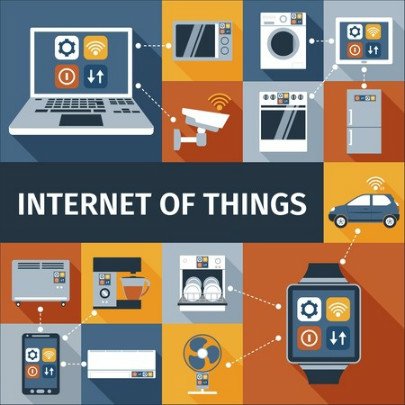Internet of Things (IoT) Opportunities
The internet of things is changing our thinking about how we can interact with the surrounding. Learn where are all the opportunities are in the world of IoT.

The internet of things is changing our thinking about how we can interact with the surrounding. We can monitor physical objects through electronic means, getting data points from them and making data-driven decisions to make better performing products, optimize processes, reduce cost and save time for businesses. Monitoring sensors can gather such data which can be utilize to extend the lifetime of product, do predictive maintenance before actually machine fails and learning how they are being operated to design better machines. In medicine IoT can help save more life using wearable devices, like devices can constantly monitor one’s vitals and can send this data back to doctor and also in case of emergency, it can alert emergency services and relatives too.
As far as opportunities in IoT, it is only limited to one’s imagination. Here we list few of the broader opportunities we have in IoT today.
Semiconductor industry: Semiconductors benefit the most from IoT. As mobile market is getting leveled, IoT might open new market for them. Expert estimates that it will be $4 to $11 trillion market in year 2025. In terms of revenue generation it can take first place in semiconductor industry according to 17% leaders while other 48% says that it could be in top 3. Not only IoT devices will increase but it also increases demand for servers and data centres, to store all the data sensors are going to produce, hence increasing demand for cloud and on premises storage devices. And don't forget about the analytics services, all these data needs to be analyzed to get maximum benefit out of it, making more demand for analytic services and processing power. It is not only the chip but IoT product require a complete package consisting of security, software packages and system integration layers. Semiconductor industry can tap-in this new market as well by providing complete package to the IoT product makers.
Home Automation: We can already see many automated devices used in home, like connected appliances, smart lighting, smart doors, connected thermostats, self operating appliances (vacuum cleaners and washing machines). As the technology evolve these devices will get smarter and smarter and will take care of our day to day routine work. Estimates says that Internet of Things can reduce near about 100 hours of chore works per year for typical household. And in year 2025 this could be $135 billion business globally. As per current state of IoT, next big impact will come from security and power management. We can already see automated security systems installed in home, in near future this will be connected seamlessly to rest of the devices in home and will become invisible to our eye.
Factories: Factories are going to use IoT innovation the most to deliver greater value and with reduced cost with the same floor plan, by optimizing machine operation and staffing. Again data collected by sensors will play major role in new business model development or enhancing existing one. Experts estimates global economy impact of around $1.2 to $3.7 trillion in year 2025. By factories we mean production environment including agriculture, manufacturing and hospitals as well. In all these settings we will get better value by optimizing productivity, hence we see more IoT devices going to be place to collect data on how processes and person works in here. Which in term gives enough data points to predict enhancement of processes and staffing requirement. Common areas would be predictive machine maintenance, for retail smart inventory management, for healthcare optimized staffing needs and for production lines reduced production time.
Vehicles: Performance of a vehicle can be improved by mounting sensors and analyzing the data it provides. We already have planes which generate over a half terabytes of data per flight. This data can give indication of when a part is going to fail or crew mistake in operation which can lead to bigger failure overtime. Optimizing transportation in a large city can benefit large number of persons. Public and private transport both can use potential of IoT to enhance performance and design of the vehicles. For public transport like busses and trains, it can show better routes or busier routes making easy for decision maker to take new vehicle purchase decision. Most of the time in public transport is spent waiting for the bus or train to arrive or leave. IoT can show such wasted time and give decision makers better view of where and how many vehicles are needed to reduce this wait time. Not to forget autonomous cars, they are coming in near future and will have bunch of sensors mounted on them. Cars can be one of the biggest IoT consumer in coming years. Estimated worth of IoT on vehicles globally could be $930 billion to $1.6 trillion per year by 2025.
Workplaces: Office for a knowledge workforce could benefit from IoT in security and energy management. Smart imaginary processing and digital cameras can cut security personal needs to monitor and take preventive actions if needed. Same way energy usage can be analyzed and different settings can produce same workplace environment still reducing energy consumption. All by just analyzing data we gather from different sensors in workplace like security cameras, thermostat, air conditioning units, security doors etc. Office IoT could be worth $70 to $150 billion in year 2015. Worksites on the other hand like oil rigs, mining sites, construction sites, can take advantage of IoT to improve operation efficiency and saving life by reducing accidents. Even today a typical oil rib has around 30k sensors. Self driving vehicles in mining sector can reduce cost and improve overall safety measures, reducing accidental damage to property and personals. Is mining and oil rig scenario, reacting to a machine breakdown is much more costlier than doing predictive maintenance. Economic impact of worksite using IoT will be around $160 to $930 billion by year 2025.
Health and Fitness: Even today we see wearable devices like watches, fitness bands, head or shoulder mounted cameras, smart glasses. And in coming years wearable devices are going to explode. Be it on body or in body, these devices are going to collect such a enormous data that can lead to many discoveries about ourselves. Health related benefit are already began to show using fitness devices, although for now it is limited to athletes and sports persons, but soon it will penetrate consumer market too. Imagine your doctor can view your vitals in real-time and using data collected about your eating habit, exercise habit, sleeping cycles, organ operation data (heart rate, blood sugar, blood pressure etc.) can be used to better diagnose the disease by medical practitioner. IoT can be worth $170 billion to $1.6 trillion in year 2025 in medical and personal health sector.
